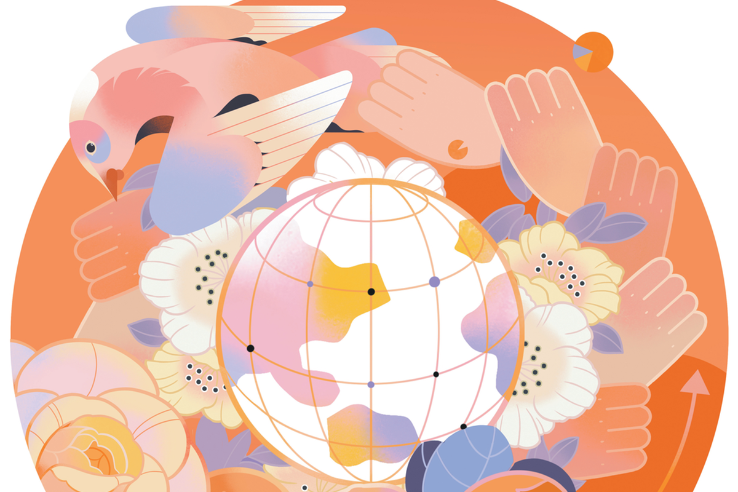What's on

Hat craft

In the past, when daily life was predominantly filled with handicrafts, children's hats woven with intricate patterns embodied paternal love and good wishes from the whole family. To better protect young children from the chill, their hats normally had an elongated piece of cloth stitched at the brim, which was to keep the nape and shoulders warm. And the part was often woven with a variety of motifs such as flowers and small animals embedded with auspicious meanings. The China National Silk Museum, in Hangzhou, Zhejiang province, is showing from its collection fine pieces of such "hat tail "made centuries back. Although small in size, they demonstrate the refinement and complication of stitching techniques. For example, some pieces show a method by which cloth of different colors were scissored into various patterns and glued or sewed together to form a motif with a three-dimensional effect. The exhibition runs through to May 15.
12 am-5 pm, on Mondays, 9 am-5 pm, Tuesday to Sunday.73-1 Yuhuangshan Road, Xihu district, Hangzhou, Zhejiang province. 0571-8703-5150.
Suzhou prints

An old saying goes in Suzhou, the city of serene mood in Jiangsu province, that "it can't be called a truly (Chinese) New Year when celebrated without buying the traditional woodblock print nianhua (New Year paintings)". In the 17th century, Suzhou rose to become a booming commercial center, equipped with abundant resources and advanced cultures, and the neighborhood of Taohuawu emerged as a production center of woodblock prints, marked with delicate lines, soft color tones and an embodiment of rich cultural meanings. Taohuawu prints, linked to refinement and quality, were traded faraway across the nation and to other parts of the world. The technique was listed a representative national intangible cultural heritage in 2006. Young artist Qiao Lanrong is among those who have been working hard for the revival of this art. A collection of woodblock prints she created around the theme of the 24 solar terms in the Chinese calendar is now on show at Suzhou Museum West. The works present distinctive features of Suzhou's landscapes, life traditions and phenological phenomena all year round. The show ends on May 31.
9 am-5 pm, closed on Mondays.399 Changjiang Road, Gaoxin district, Suzhou, Jiangsu province.0512-6757-1665.
Landscape master

"I grew up in the embrace of mountains and waters of Sichuan, … and I was somewhat guided to talk with nature in the path of art," says Shen Beixin, a prominent landscape artist. Color carries the most important message in his oil paintings, and a broad vision of the world and life introduces the audience to the magnificence of nature and a humanistic perspective. An exhibition showing dozens of his landscape paintings over the decades is being held at Tsinghua University Art Museum through to March 26.Shen not only seeks to present a poetic atmosphere in his work but also pursues the presentation of an ideal lifestyle that ancient Chinese intellectuals envisioned. In childhood, he had read Zuiwengting Ji (Account of the Pavilion of an Old Drunkard), an essay of the 11th-century author Ouyang Xiu, which expressed the pleasures of living a carefree, reclusive life in the embrace of mountains and waters, and it has influenced Shen's art. Ten paintings on show, including one that depicts a pond of water lilies in Claude Monet's home in Giverny, France, have been donated to the museum.
9 am-5 pm, closed on Mondays.1 Tsinghua University campus, Haidian district, Beijing.010-6278-1012.
China Daily
Today's Top News
- Agreement boosts ocean governance
- Experts: Punishments law misinterpreted
- Project weaves global map of silk's grand history
- Cross-border research work bearing fruit
- Disrupting market under fabricated veneer of 'national security' hurts US' own interest: China Daily editorial
- Yasukuni visit would add insult to injury: China Daily editorial






























